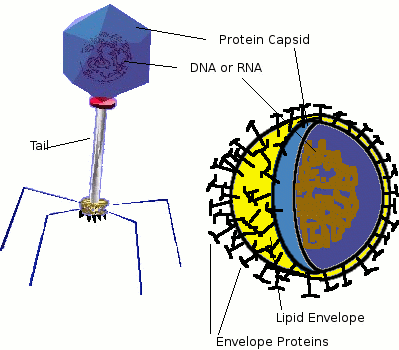There are two major components to viruses
- Head region, which contains the capsid, made from protein. This part also contain nucleic acids (DNA/RNA).
- The tail, which the virus use to attach itself to a host cell. It consist of a hollow tube through which the virus transfer its DNA/RNA during infection.

